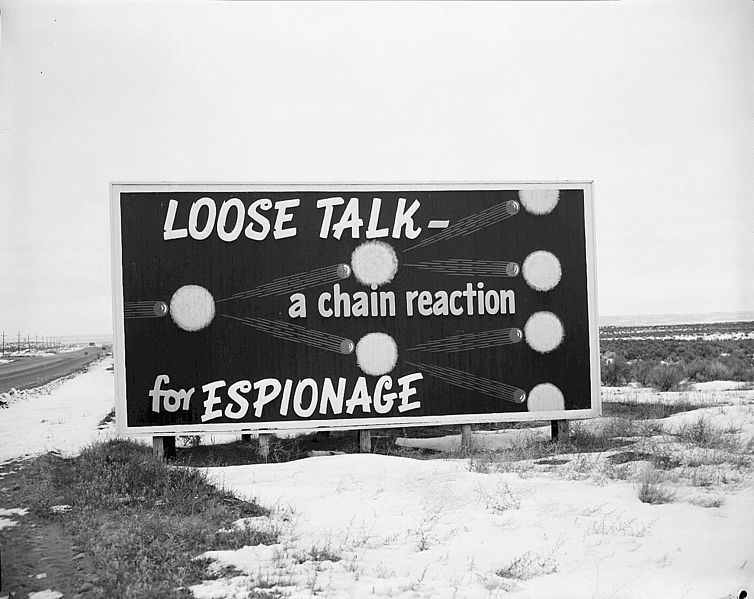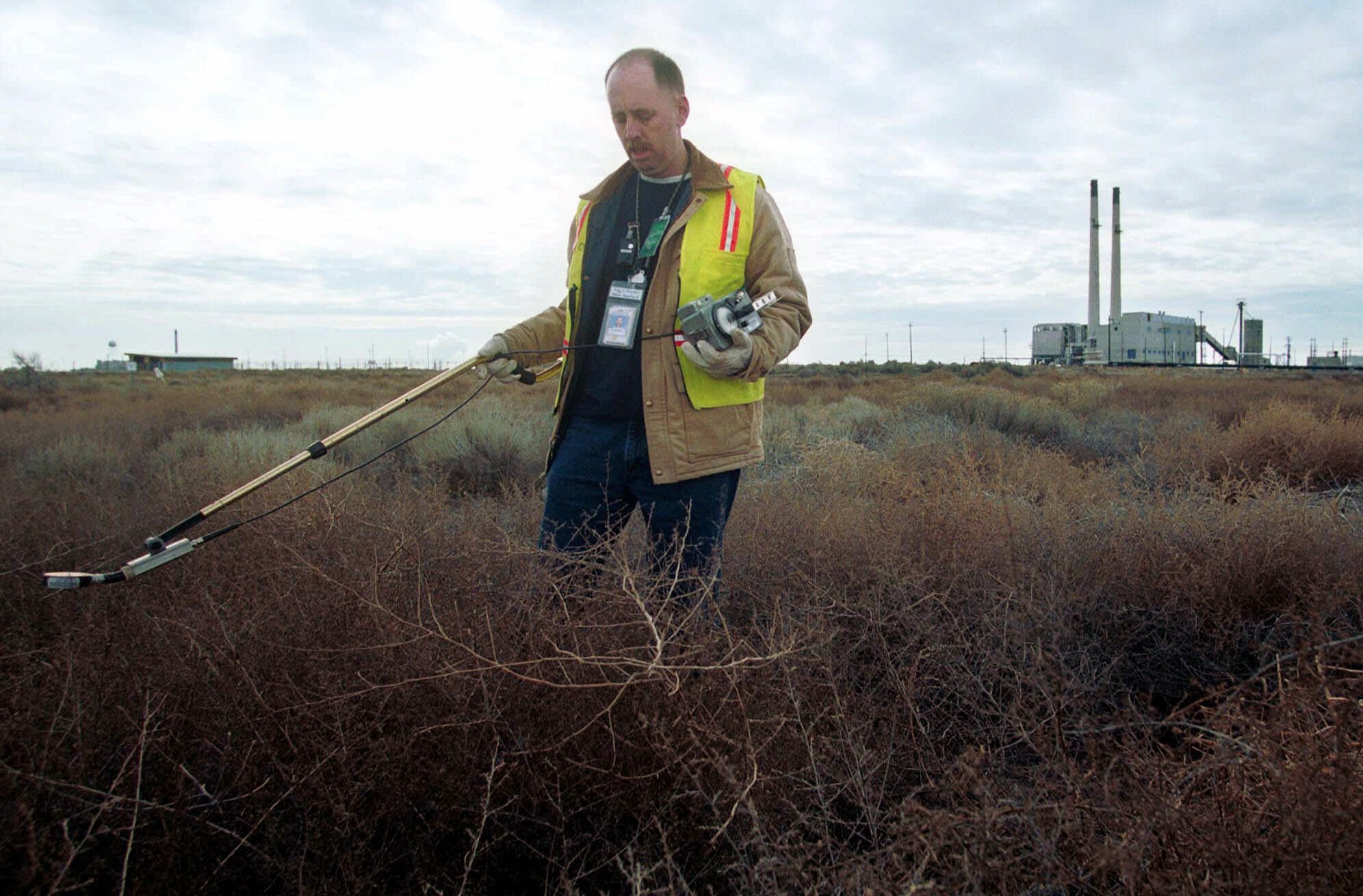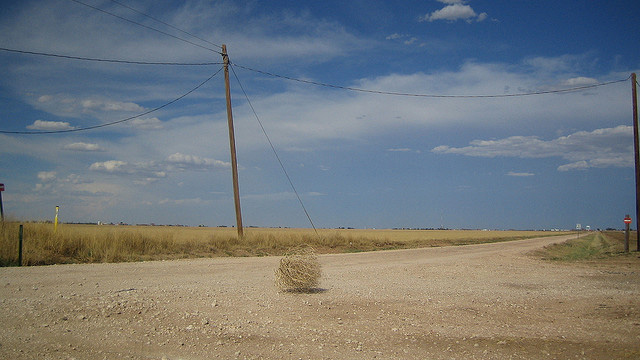The tumbleweed, which seems so at home rolling down a highway, is actually an invasive plant from the Russian steppes. In the relatively short time it’s been invading the plains — just over a century — the tumbleweed has managed to establish itself as an indelible symbol of the western landscape. It is the ultimate sleeper cell, we might say, an enemy plant, if we were to resort to Cold War metaphors.
Picture: jezarnold/Flickr
For last month’s issue of National Geographic, George Johnson wrote an eloquent hate letter to the tumbleweed. Johnson has been fighting a losing battle against the tumbleweed on his patch of New Mexico land; the plant is ubiquitous and tenacious, making it a ready invader.
What especially caught our attention, however, was this paragraph, which shows just how persistent the damn weed is. A note on terminology here: “tumbleweed” can refer to any number of plants that break free of their roots and tumble around spreading their seeds, but the most common one is the Russian thistle, also known by its scientific name Salsola tragus.
During the early 1960s, after aboveground nuclear testing finally ceased at the Nevada Test Site, the first thing said to grow back was Russian thistle. Radioactive Salsola has come tumbling out of the old Hanford Nuclear Reservation in Washington, where plutonium was manufactured during the Cold War. I half expect to hear someday that Russian thistle has been found on the moon.
The Hanford site in Washington state, which is the most contaminated nuclear site in the US, has recently encountered trouble with leaking waste tanks. What intrigues me is that the containment problems at Hanford have also long been compounded by what one internal presentation calls “biological vectors,” aka tumbleweeds but also fruit flies, mud dauber wasps, pigeons, swallows, mice, and rabbits, species on the loose potentially spreading radiation beyond the site. Hanford even has a whole Biological Control program to deal with these vectors.

A Cold War-era billboard at Hanford. Wikimedia Commons
In 1959, in what may be the worst pest incident in Hanford history, a badger broke into a radioactive waste pit setting off a biological chain reaction. Bunnies tromped in looking for salt, spreading 200 curies worth of radioactive poop over 2000 acres of the Hanford site, according to Science. The appearance of radioactive doo doo today would launch a whole manhunt — or rabbithunt — for the offending rodent. After all, we can’t have radioactive bunnies dropping cesium-filled pellets all over the landscape. A former nuclear reactor still needs pest control.
Nuclear’s long-lasting legacy, whether for electricity or for war, forces us to act as permanent stewards of the earth. Hanford has been a massive cleanup site for decades, and its tanks will need monitoring for many more to come. When Yucca Mountain was being proposed as a nuclear waste repository, the EPA mandated warnings that could be intelligible for 10,000 years to come. That’s a blink in geologic time — but how many 10,000-year-old, or even 1000-year-old, languages are readily understandable to us now?

A staff member uses a Geiger counter to search for radioactive tumbleweeds at Hanford. AP Photo/Jackie Johnston
But anyway: tumbleweeds. The plant’s taproots can creep six metres down, bringing up radioactive waste from underground burial sites. Then winds can carry these radioactive bundles up to 7km away. A few years ago, Hanford’s staff was removing 30 of them a year. “Our dream is that we have this place tumbleweed-free,” the site’s then biological control manager for radiation protection told the LA Times in 2001. “But that’s about as likely as a Soviet reunion,” quipped the paper in response.
As the most visible of radioactive “biological vectors” at Hanford, tumbleweeds seem to have especially captured the imagination. The idea of radioactive waste tumbling about is radically at odds with, say, a gif of tumbleweeds meant to convey, “Nothing here, move along.” But there’s plenty to ponder here — most of all how a radioactive danger of our own doing ended up being spread by Russian invaders. [National Geographic, a href=”https://www.sciencemag.org/content/236/4809/1616.extract”>Science, Wall Street Journal,LA Times — Thanks Matt Mirandi!]

Picture: tumblr
